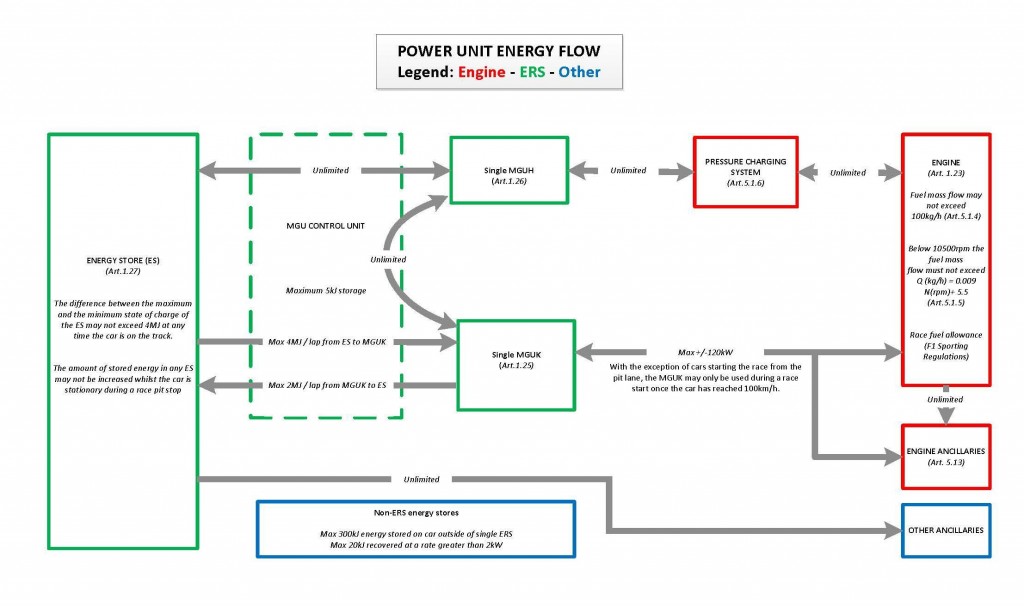roon wrote: ↑15 Jul 2018, 21:55
Assuming an average full-throttle lap time of ~64s, a fully utilized MGUK (as regulated) will consume a minimum of approximately 8MJ/lap, plus whatever is used at part and zero throttle. The ES can only send 4MJ to the MGUK (as regulated), so the remaining 4+MJ must be supplied by the MGUH or by the ES via the MGUH. Said another way:
4MJ to the MGUK at 120kW, 2MJ from the MGUK at 120kW
>4MJ to the MGUH at >120kW, >4MJ from the MGUH at >120kW
The ES cannot vary in charge more than 4MJ per lap, so in order to deliver >8MJ per lap it much charge and discharge multiple times per lap. Two or more ES divisions (chemical or virtual) will alter how this charge cycling is allotted.
Yes the ES does need to charge and discharge multiple times round a lap.
Whilst it is insightful to think of them deploying the MGU-K all the time they are at WOT I don’t think that’s what they do. It is more laptime efficient to run electric supercharger at the beginning of the straight, switch to ICE plus MGU-K and finally switch off the MGU-K and charge the ES, they might even use the MGU-K as well, sort of lift and coast plus. This of course makes it difficult to estimate what the total,energy flow is.
If I had to guess, and I’m going to, I would opt for Ferrari using two virtual batteries, switching between them to manage temperatures. My guess is, and it’s only a guess, is that the charge and discharge heat the core of each battery cell and the cooling is at the perimeter. So if the duty cycle switches between cells they can potentially perform at a lower core temperature, which I believe is beneficial to battery performance and life. Maybe even reduce losses, which is important because they measure charge in and out but make no allowance for efficiency.
I don’t know why this would make it difficult to monitor the SOC, or whatever the FIA were measuring. Perhaps there are cumulative errors in measurement and Ferrari’s approach gave them a benefit from those errors.
Fortune favours the prepared; she has no favourites and takes no sides.
Truth is confirmed by inspection and delay; falsehood by haste and uncertainty : Tacitus



